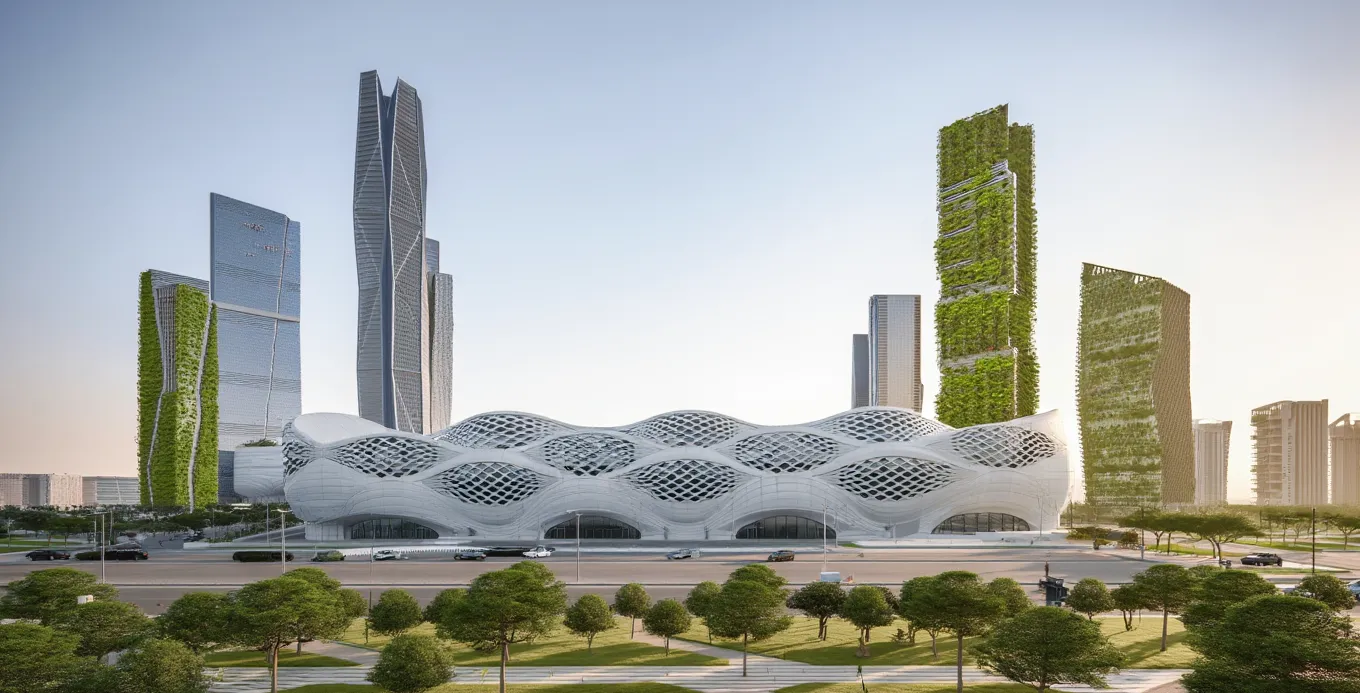Sep 14, 16:55 • 10 min. read
The green economy in Saudi Arabia: Reengineering the development model for comprehensive sustainability

The world today faces complex environmental and economic challenges that necessitate a shift toward new development models that promote sustainability.
At the forefront of these models is the concept of the "green economy," a strategic approach that combines economic growth with environmental preservation. Saudi Arabia, under Vision 2030, has adopted this direction through various initiatives aimed at reengineering the development model toward a low-carbon and resource-efficient future.
This article explores the concept of the green economy in the Saudi context and analyzes how economic and institutional structures are being redesigned to adapt to environmental challenges and create new development opportunities.
Definition and Dimensions of the Green Economy
The green economy is an economic model that aims to achieve sustainable development by reducing carbon emissions, improving resource efficiency, and creating jobs in environmentally friendly sectors.
According to the United Nations Environment Programme (UNEP), a green economy is "one that results in improved human well-being and social equity, while significantly reducing environmental risks."
The green economy includes four key dimensions:
1. Environmental Dimension: Focuses on protecting ecosystems and reducing pollution.
2. Economic Dimension: Encourages balanced growth based on innovation.
3. Social Dimension: Contributes to justice and job creation.
4. Technological Dimension: Supports the development of sustainable technologies.
Saudi Context: Challenges and Motivations
As one of the world’s largest oil producers, Saudi Arabia faces unique challenges in transitioning to a green economy, including:
- Historical reliance on oil revenues as the main source of national income.
- High domestic energy consumption, especially in air conditioning and transportation.
- Water scarcity and dependence on groundwater for agriculture.
- Growing international pressure to comply with climate agreements.
Nevertheless, strong motivations support the transition:
- Accelerated climate change impacts in the region.
- The need to diversify income sources under Vision 2030.
- Vast opportunities in renewable energy and eco-tourism.
Saudi Arabia’s Green Economy Initiatives
A. Governmental Initiatives:
- Saudi Green Initiative: Aims to plant 10 billion trees and reduce emissions by 278 million tons annually by 2030. It also seeks to protect 30% of the country’s land and marine areas.
- Middle East Green Initiative: A regional effort to plant 50 billion trees across the region.
- Circular Carbon Economy: A comprehensive strategy to manage carbon emissions through four pillars: reduction, reuse, recycling, and removal.
B. Energy Sector:
- Solar projects such as the Sakaka Solar Power Plant (300 MW) and the Sudair Renewable Energy Project (1,500 MW).
- Wind energy projects in Dumat Al-Jandal.
- NEOM Project: A smart city powered entirely by renewable energy.
C. Sustainable Transportation:
- Development of infrastructure for electric vehicles.
- Riyadh Metro and public transportation projects in Jeddah and Dammam.
Encouragement of hybrid and smart car imports.
Reengineering the Economic Model
A. Economic Diversification:
Promoting smart agriculture using modern irrigation and solar technologies.
- Supporting eco-tourism projects in AlUla and the Red Sea.
- Developing green industries like recycling and energy-efficient
- appliances manufacturing.
B. Institutional Transformation:
- Establishment of the General Authority for Environmental Security to regulate and monitor environmental activities.
- Environmental regulations enhancement by the Ministry of Environment, Water, and Agriculture.
- New green building standards implementation in major cities.
C. Innovation Stimulation:
- Accelerator programs like "Sustainability Accelerator" to support green startups.
- Clean energy project funding through the Public Investment Fund.
- Partnerships with universities and research centers to develop advanced environmental solutions.
Challenges
Despite the momentum of these initiatives, several obstacles remain:
- The need to change consumer culture.
- Lack of public awareness about the green economy.
- Shortage of qualified human resources in renewable energy and environmental technology sectors.
- Need for stricter policies and incentive-based enforcement.
Opportunities of the Green Economy
- Creation of thousands of jobs in new sectors like renewable energy and sustainable transport.
- Reduction of government spending on fuel subsidies.
- Public health improvement through pollution reduction.
- Enhancing Saudi Arabia’s competitiveness in sustainable global markets.
Case Studies
A. NEOM Project
NEOM is one of the world’s most ambitious projects, representing a fully integrated future city powered entirely by renewable energy, featuring advanced recycling and AI technologies.
B. The Red Sea Project
The first tourism project designed to rely 100% on renewable energy, aiming to preserve 75% of natural islands and develop less than 1% of the total areato minimize environmental impact.
C. ACWA Power
One of Saudi Arabia’s leading companies in renewable energy development, including the Noor Solar Project in Morocco.
The Role of Citizens in Supporting the Green Economy
- Conserving electricity and water usage.
- Using public transport or electric vehicles.
- Supporting local and eco-friendly products.
- Participating in afforestation and environmental cleanup campaigns.
Conclusion
The green economy offers Saudi Arabia a strategic opportunity to redesign its economic model in alignment with global changes, ensuring environmental, social, and economic security. Through reengineering the development model, the Kingdom not only fulfills its environmental goals but also lays the foundation for a more diverse, innovative, and inclusive economy.
This transformation cannot be completed without the joint efforts of the government, private sector, and individuals. While the challenges are significant, the opportunities are greater — and the future of a green Saudi Arabia depends on our collective will
References:
- United Nations Environment Programme (UNEP)
- Saudi Vision 2030
- Saudi Green Initiative – https://www.greeninitiatives.gov.sa/
- General Authority for Environmental Security
- Ministry of Energy (Saudi Arabia)
- Saudi Industrial Development Fund Reports
- NEOM Project – https://www.neom.com/
- World Economic Forum Reports on Green Economy
- World Bank – Sustainable Economy in MENA
- Circular Carbon Economy Study – Nature Sustainability (2022)
- Ministry of Environment, Water, and Agriculture
- ACWA Power – https://www.acwapower.com
- Saudi Standards, Metrology and Quality Organization
- Nature Climate Change – 2023